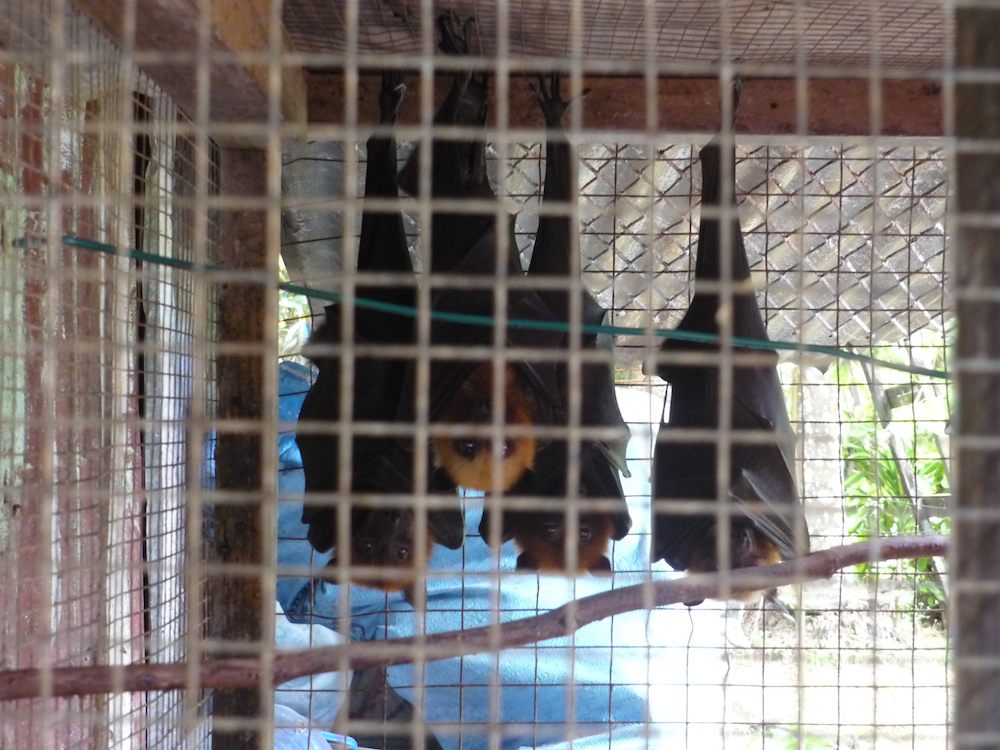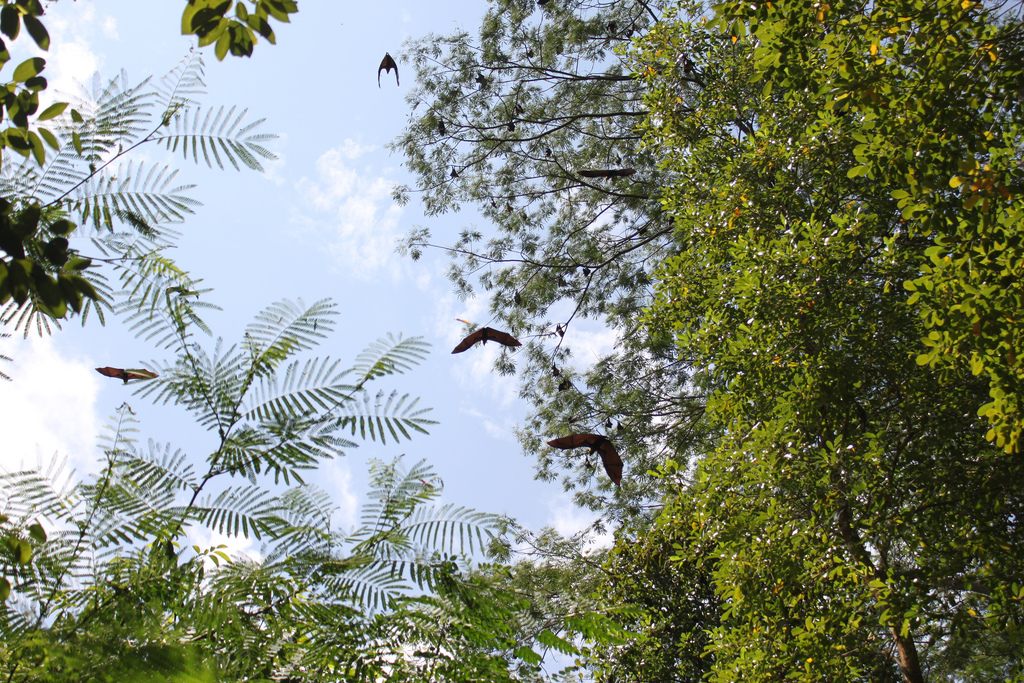Eating Bat in the Seychelles
 All photos by Matthew Maye & Lynn Freehill-Maye unless noted
All photos by Matthew Maye & Lynn Freehill-Maye unless noted
There are few places on earth where can you consume a flying creature of the night. An Indian Ocean island chain is among them.
You might be wheeling around the Seychelles, admiring island birds and flowers, when the scene turns darker. Your guide points out a bat trap in the sky. Fishing wire dangles from a palm tree, hooks at the bottom. The Seychellois have been catching and cooking fruit bat since the days of slavery, he explains.
And then he delivers you to Marie Antoinette’s, the oldest restaurant on Mahé island, and vanishes. You are left on your own to choose: Do you want to sample curried bat meat cut from tiny wings?

My husband and I faced this decision on our first-anniversary trip to the Seychelles. We had expected glamour on these tropical islands 1,000 miles off the coast of Madagascar. After all, this was where Prince William and his wife Kate had honeymooned; George and Amal Clooney would be next. But with bat, we had found the islands’ creepier edge. Fruit bats swooped over Mahé not just at night, but even at high noon.
Like snails in France, we discovered, bat in the Seychelles is a delicacy. Slaves used to hit the animals they call “flying foxes” with stones or clubs, local historian Tony Mathiot told me later. According to Mathiot’s research, the Seychellois palate really developed a taste for bat flesh in the 1940s. In those years, many locals bought hunting rifles to expressly to shoot the flying mammals.
 Seychelles Fruit Bat on La Digue Island (photograph by Marion Schneider & Christoph Aistleitner/Wikimedia)
Seychelles Fruit Bat on La Digue Island (photograph by Marion Schneider & Christoph Aistleitner/Wikimedia)
 Fruit bats flying in the Seychelles (photograph by Gerwin Sturm/Flickr)
Fruit bats flying in the Seychelles (photograph by Gerwin Sturm/Flickr)
All 100 or so of the country’s rifles were collected after a coup d’etat in 1977. Without guns, the bat population really took flight. These days, nets and hooks allow now-plentiful fruit bat to be caught, skinned, and curried. The bat trap that our guide, Alrick Agricole, pointed to was an example. Each is carefully placed next to ripening mango or breadfruit so the bats get caught going for the nectar.
Curried bat is appreciated as a “delectable” dish in the Seychelles, Mathiot told me — but some locals and tourists refuse it. “Those who revolt at the thought of eating bat say it’s because when the little creature has been skinned, its small body resembles that of a human being — which is true,” he says.
Back at Marie Antoinette’s, my usually adventurous-foodie husband was squeamish about ordering the fruit bat. I insisted this was a once-in-a-lifetime chance. When the bat arrived oozing brown curry sauce, though, even I was daunted by its tininess. We struggled to knife meat off the wings bent across our plates. After sawing at it, we were rewarded with what tasted like bits of extra-tough duck.
There are other reasons to avoid the meat. Fruit bat, the largest bat species, is also eaten in places like West Africa, Papau New Guinea, and Gaum. But health officials warn against eating them, saying they can carry disease.
When he reappeared, Agricole laughed to see us holding utensils. “You must gnaw them like chicken wings!” he said. “Lots of tiny bones.”

Gastro Obscura covers the world’s most wondrous food and drink.
Sign up for our email, delivered twice a week.

































Follow us on Twitter to get the latest on the world's hidden wonders.
Like us on Facebook to get the latest on the world's hidden wonders.
Follow us on Twitter Like us on Facebook